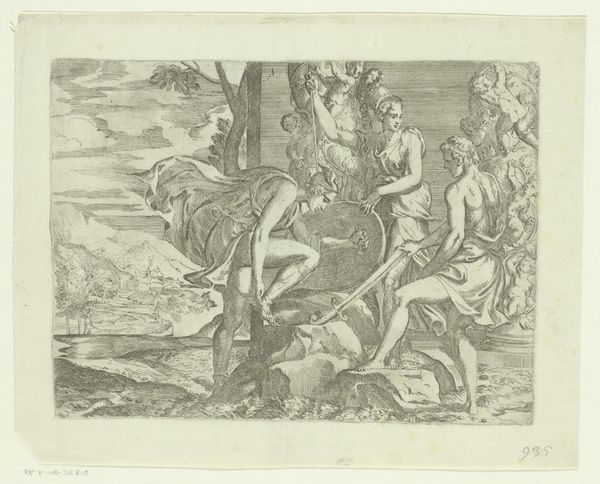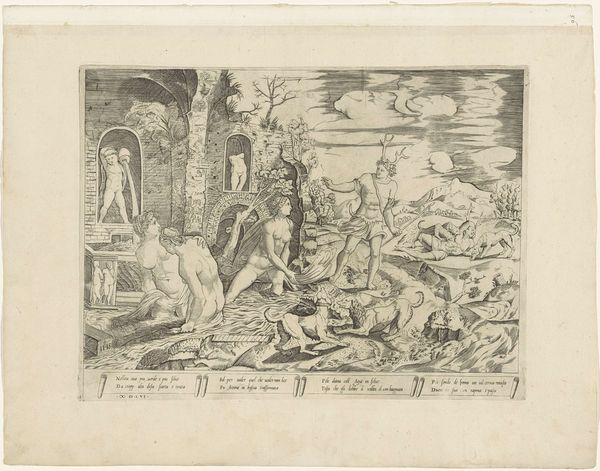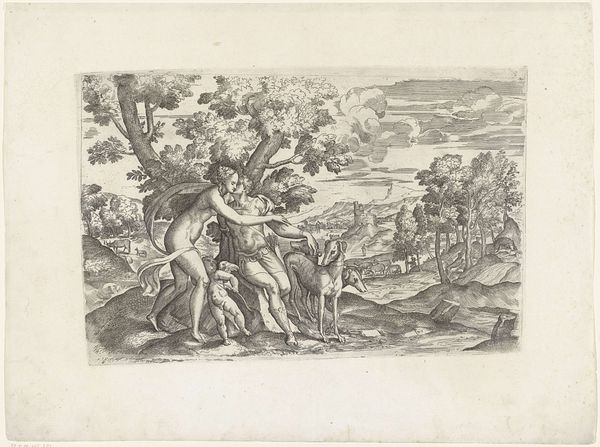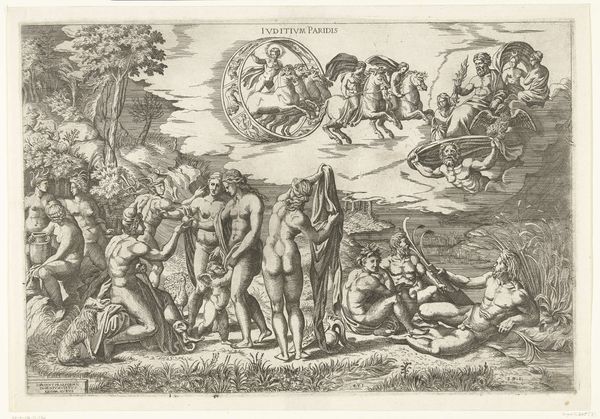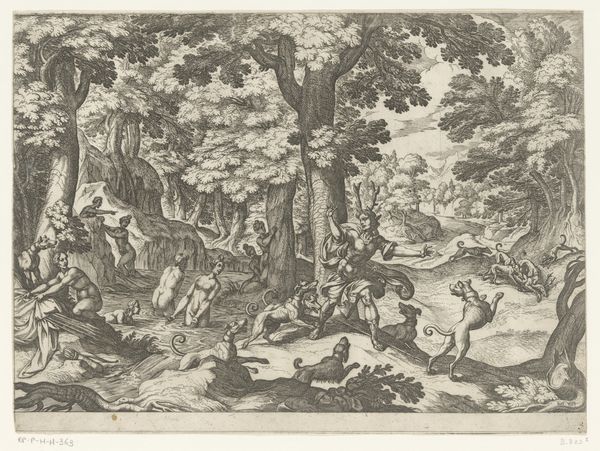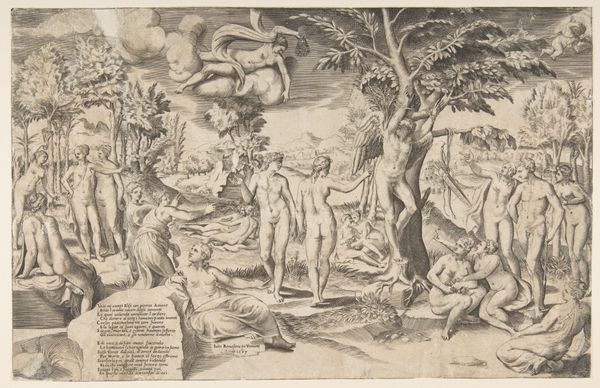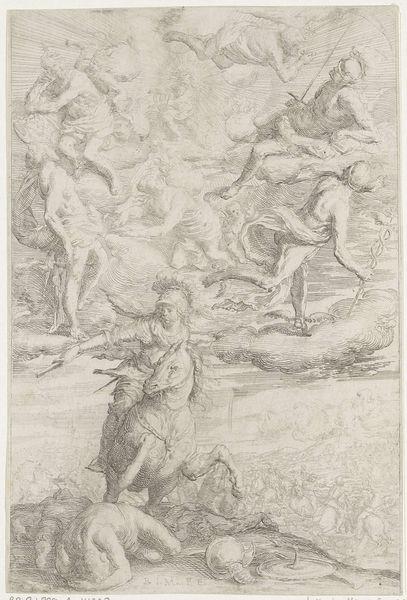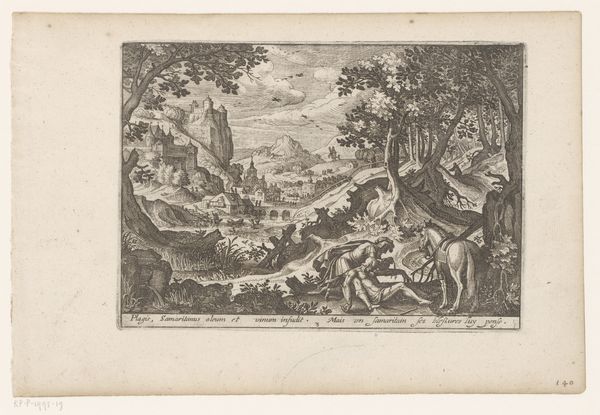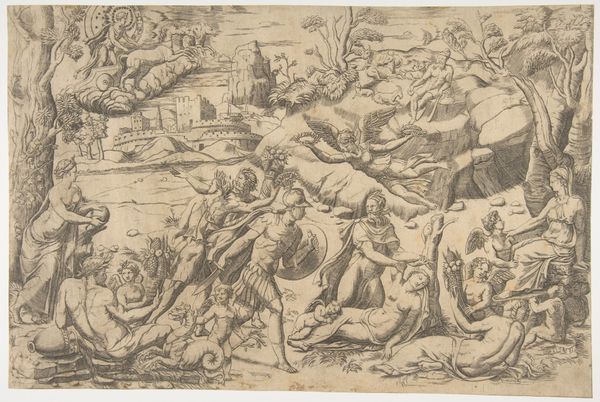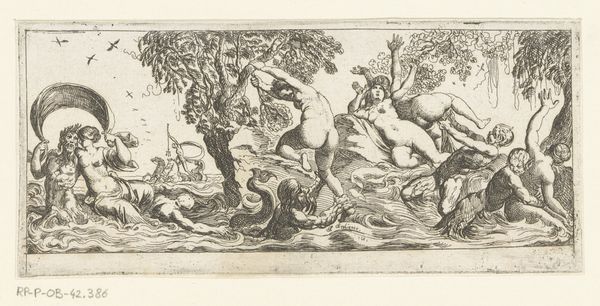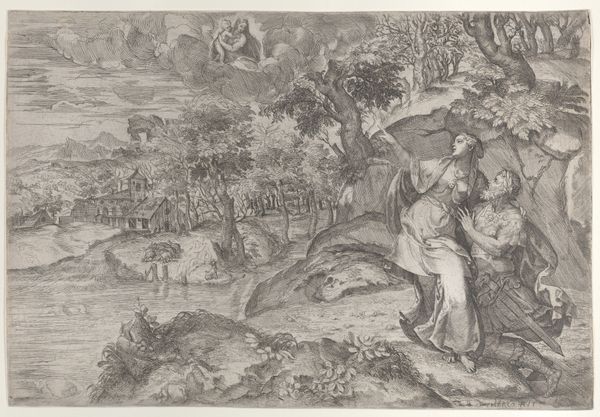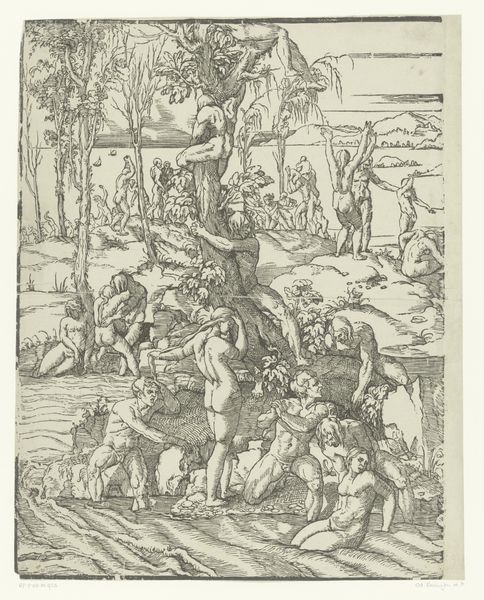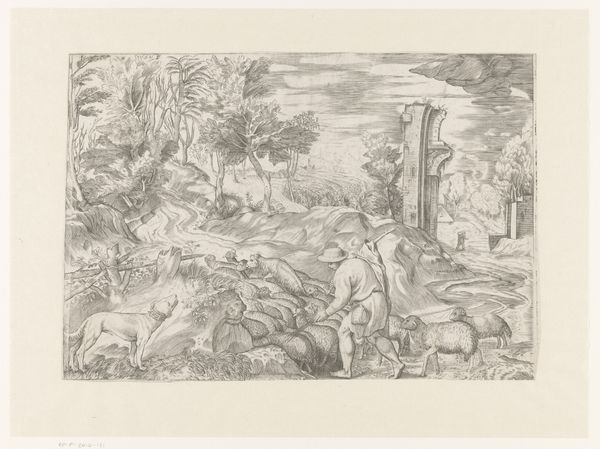
drawing, paper, ink, engraving
#
drawing
#
landscape
#
paper
#
11_renaissance
#
ink
#
history-painting
#
italian-renaissance
#
engraving
Dimensions: height 270 mm, width 400 mm, height 413 mm, width 542 mm
Copyright: Rijks Museum: Open Domain
This print, Caesar Augustus and the Tiburtine Sibyl, was made by Marco dell'Angolo del Moro. The image depicts a scene from Roman mythology, where the emperor Augustus asks the Tiburtine Sibyl if he should accept the title of emperor. The Sibyl, a prophetess, has a vision of the Virgin Mary and the Christ child, which she presents to Augustus as a sign that he should not accept the title, because a greater emperor will come. Prints like this one circulated widely in sixteenth-century Europe, a time when artists, intellectuals, and political figures were very interested in ancient history. The story of the Tiburtine Sibyl would have been familiar from texts, plays and other artworks. Here, the artist revisits it to make commentary on contemporary society. The image legitimizes the idea of a ruler who puts spiritual authority above earthly power. To understand it fully, we need to look at the history of printmaking, the history of religion, and the political ideas of the 1500s. Approaching art history this way shows how artworks were part of a much wider world.
Comments
rijksmuseum about 2 years ago
⋮
Zobel arranged the prints in his album in thematic groups. It opened with a section on ancient history, followed by topical prints, mythological and allegorical depictions, portraits and caricatures, religious gatherings, architecture, and sculpture. In this etching (in the first section), the Tiburtine Sibyl prophesies the coming of Christ to the Roman emperor Augustus.
Join the conversation
Join millions of artists and users on Artera today and experience the ultimate creative platform.
